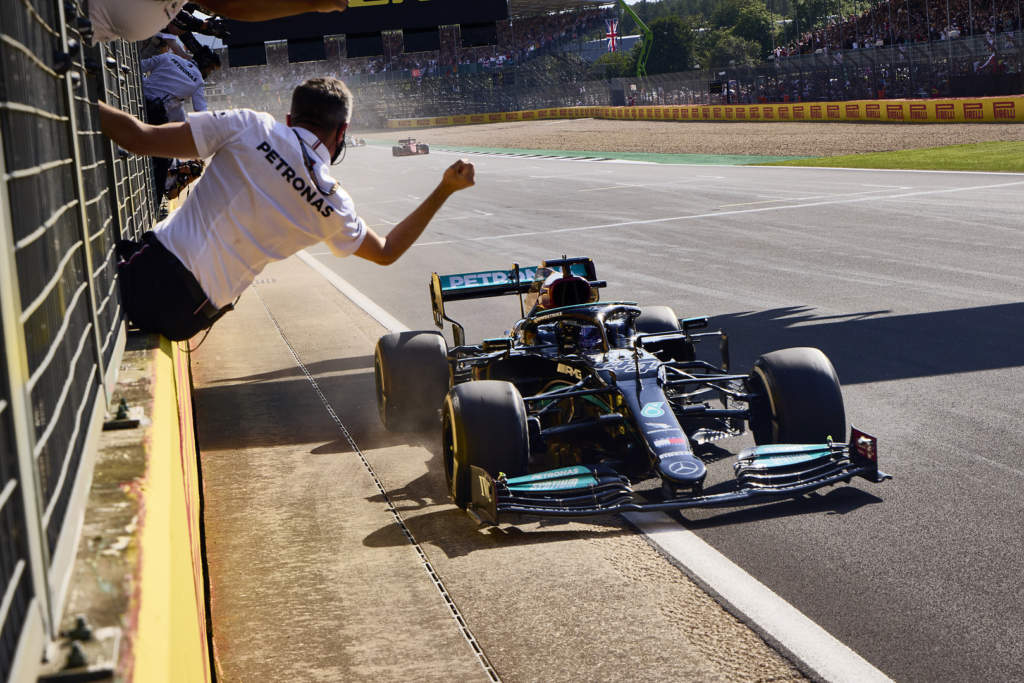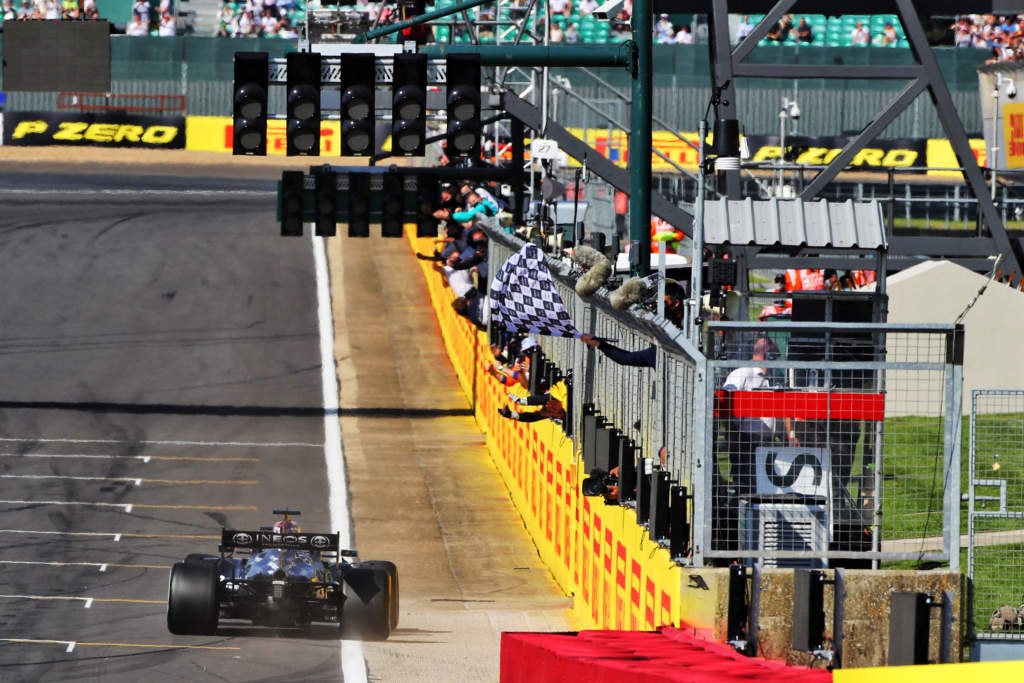Up Next

Mercedes chief technical officer James Allison says that Lewis Hamilton was not obliged to hit the apex at Copse Corner while attempting to pass title rival Max Verstappen on the first lap of the British Grand Prix, despite this being cited as a factor for the 10-second penalty issued by the stewards.
The FIA stewards, including five-time Le Mans 24 Hours winner Emanuele Pirro, deemed Hamilton to be “predominantly at fault” for the accident, which resulted in a penalty that the Mercedes driver served at his first pitstop before recovering to win.
Their verdict stressed that Hamilton “was on a line that did not reach the apex of the corner, with room available to the inside” as one of the key factors in the fact that the Mercedes driver did not avoid contact.
But Allison insists that Hamilton’s move complied with FIA internal guidance that does not include any demand to make the apex when passing on the inside. He also said that the guidance does not demand a car be fully alongside for such an overtaking attempt to be legitimate.
Allison stressed that the speed of the corner should make no difference to the verdict, although there is nothing in the brief stewards’ verdict that references this being a factor.
“I certainly think that whether Copse is a fast corner or a slow corner makes no difference.,” said Allison in a British Grand Prix debrief video released by Mercedes.
“This is about what are the rules to do with overtaking and I didn’t see that Lewis did anything wrong with respect to those rules.
“Indeed, later in the race, Lewis made two further overtakes at Copse using exactly the same guidance and there wasn’t a contact in either of those cases.
“In the end for our outcome it didn’t make any difference but I can understand people who maybe don’t understand there is no obligation on you to hit the apex of the corner, that you don’t have to have your whole car in front of the other car.
“I can understand that if you are seeing it from that perspective you might think that the car coming from behind has some sort of obligation to make sure that no crashes take place, but if you look at the stewarding document then I think that Lewis did nothing wrong,”

Allison laid out the team’s full argument for why Mercedes believes Hamilton should not have been penalised for the collision on the basis of the FIA’s internal guidance.
The accident happened on the opening lap at Silverstone, with Hamilton attempting to pass Verstappen on the inside of the fast Copse right-hander. Hamilton’s front-left wheel made contact with Verstappen’s right-rear, pitching the Red Bull heavily into the barrier.
The FIA internal guidance was also referenced by Mercedes team principal Toto Wolff during the red-flag stoppage in his communications with race director Michael Masi.
“We were concerned after the incident and prior to the restart to make sure that the stewards had read and were following the FIA’s internal guidance to stewards on the rights and wrongs of overtaking because as far as we are concerned, the manoeuvre that took place, the manoeuvre that Lewis did was absolutely in line with the FIA’s overtaking guide,” said Allison.
The view from above of *that* incident#BritishGP 🇬🇧 #F1 pic.twitter.com/O7QhraSNq0
— Formula 1 (@F1) July 18, 2021
“If you are on the inside of the corner, overtaking on the inside of the corner, then the guidance requires that you are substantially alongside. It is not required that you are ahead, it requires that you are substantially alongside as you arrive at the corner.
“Lewis definitely was substantially alongside, he had his front axle well beyond the midpoint of Verstappen’s car. It requires you are substantially alongside and it requires that you must be able to make the corner.
“By make the corner it means go round the corner and not leave the track or lose control of the car. Those are the things you need to satisfy.
“If you can go round the corner, if you are substantially alongside the other car then the corner is yours. What that means is not that you have to emerge in the lead, what it means is that you do not have to cede your position, you do not have to back off and the other car has a duty to avoid hitting you.
“So, if you follow the notes that are provided to the FIA stewards and you look frame by frame at what happened with Lewis, he was substantially alongside, he absolutely would have made the corner and indeed did make the corner and therefore there was no need for him to cede any ground.
“So, I did feel that it was harsh to get the penalty. I realise not everyone agrees with that, but I still believe that to be the case.”





